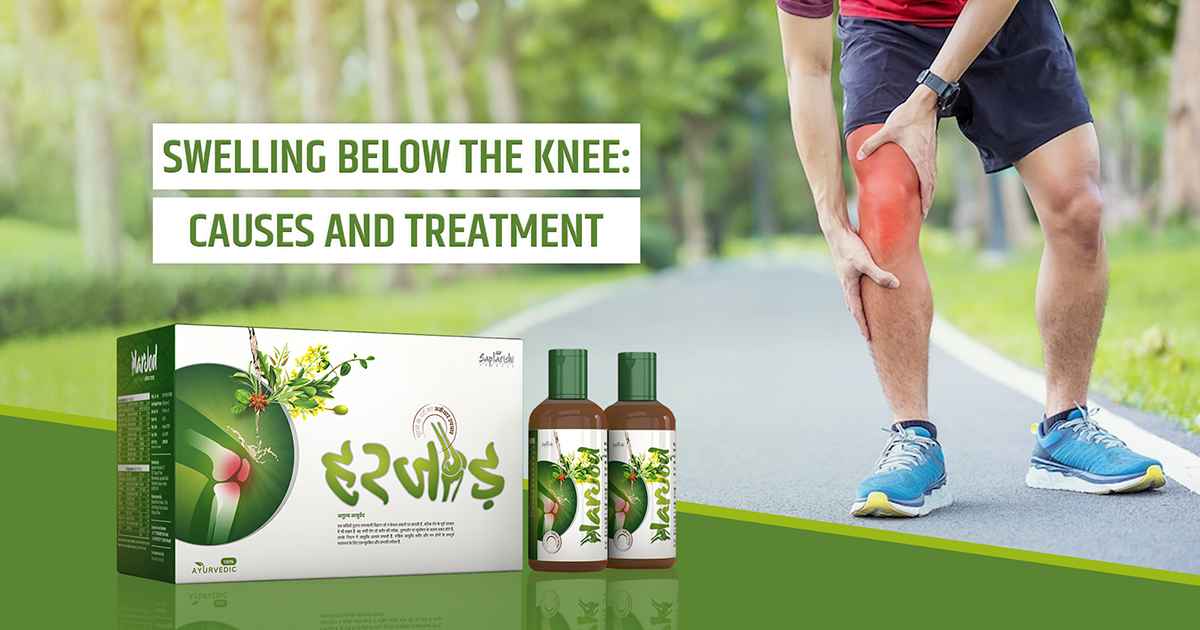Swelling below the knee can have various causes, and it's important to identify the underlying reason before determining the appropriate treatment.
In Ayurveda, an ancient system of medicine originating in India, the approach to treating swelling typically involves balancing the body's doshas (Vata, Pitta, and Kapha) and addressing the root cause of the imbalance.
Causes of Swelling Below the Knee
Here are some potential causes and Ayurvedic approaches to treatment:
Vata Imbalance:
Symptoms: Swelling with pain, stiffness, and a feeling of coldness.
Ayurvedic Treatment: Balancing the Vata dosha through warm oil massages (Abhyanga), consuming warming spices like ginger and turmeric, and following a Vata-pacifying diet.
Pitta Imbalance:
Symptoms: Swelling with heat, redness, and inflammation.
Ayurvedic Treatment: Cooling therapies, such as applying cold compresses with sandalwood paste or aloe vera gel. Consuming cooling foods like cucumber, mint, and coriander may also help.
Kapha Imbalance:
Symptoms: Swelling with a sense of heaviness and lethargy.
Ayurvedic Treatment: Adopting a Kapha-pacifying lifestyle, which includes regular exercise, warm and light foods, and herbal remedies like trikatu (a blend of ginger, black pepper, and long pepper) to stimulate digestion and reduce excess Kapha.
Water Retention:
Ayurvedic Treatment: Herbal remedies like Punarnava (Boerhaviadiffusa) are often used for their diuretic properties to help eliminate excess water from the body.
Joint Disorders (Vata Disorders):
Ayurvedic Treatment: External applications of warm oils infused with anti-inflammatory herbs like Nirgundi (Vitex negundo). Internal use of herbs like Guggul and Shallaki may also be beneficial.
General Ayurvedic Tips
Diet:
- Include anti-inflammatory spices like turmeric and ginger.
- Consume warm, easily digestible foods.
- Lukewarm water or herbal teas are good options for proper hydration.
Lifestyle:
- Engage in regular, gentle exercise such as yoga or walking.
- Make sure to get adequate rest and sleep to facilitate overall recovery.
Herbal Remedies:
Ayurvedic herbs like Guggul, Shallaki, Punarnava, and Triphala may be recommended by an Ayurvedic practitioner based on your specific condition.
Joint Pain Relief Oil
Harjod Joint Pain Relief Oil and Lep are natural remedies for swelling below the knee and joint pain, made using Ayurvedic methods. They're a mix of special herbs from the Himalayas, making them great for easing joint pain and reducing swelling effectively and for a long time.
The Harjod Lep comes as a powder. You have to mix it with warm water to make a paste and put it on the sore area before bedtime. The next morning, after washing off the Lep, you gently massage joint pain relief oil until it soaks in.
This oil helps with blood circulation, reduces pain and swelling, helps bones heal, makes joints move smoother, and strengthens the muscles around joints.
Using this joint pain relief oil-and-paste combo can help with arthritis, osteoarthritis, spondylitis, and other joint pains. It's safe to use regularly because it doesn't have any chemicals and is all-natural.
Summary
Ayurveda focuses on the major reasons behind knee swelling and pain. If your knees hurt and you want a natural solution without surgery, Harjod Joint Pain-Relieving Oil and Lep are there to help.
By adopting Ayurveda, which involves making healthy lifestyle choices, engaging in mindful movement, and using natural joint pain relief oil, individuals can experience a sense of vitality and overall well-being.






